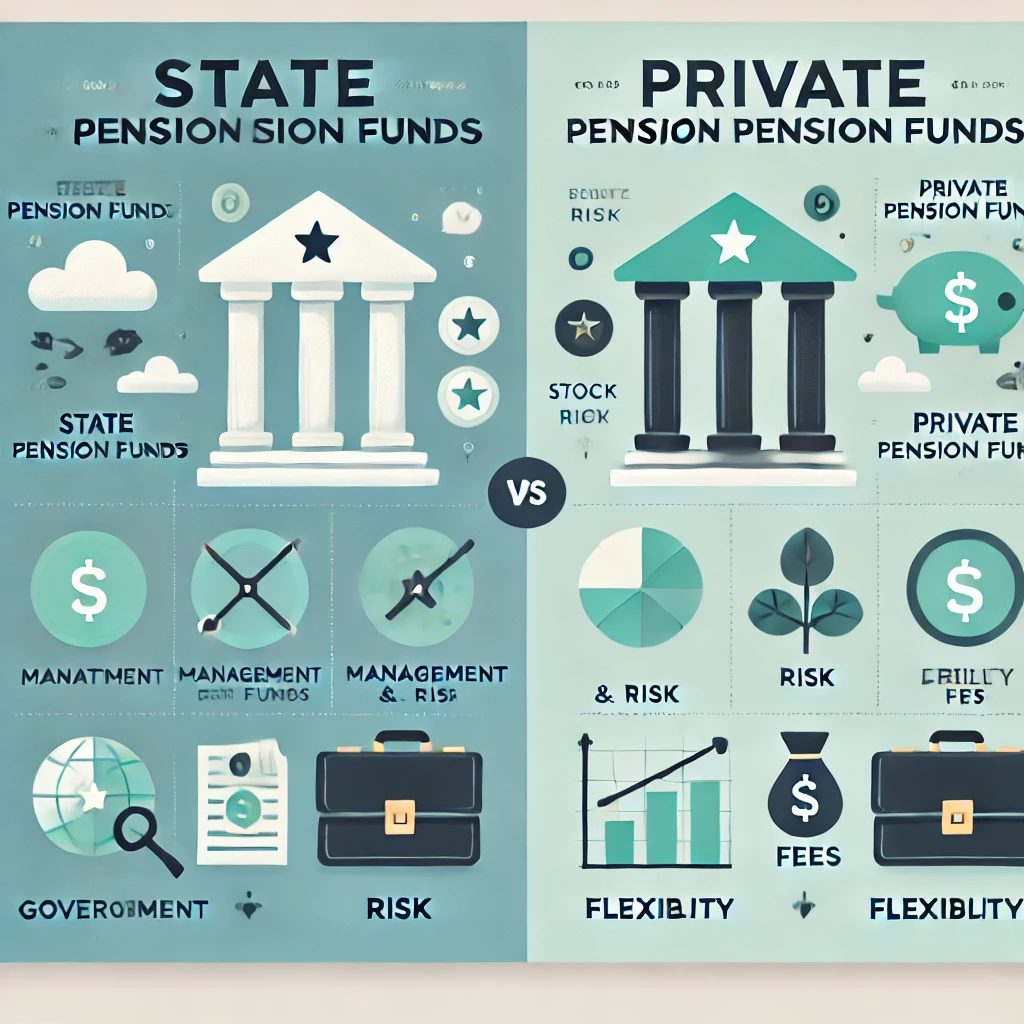The differences between public and private pension funds

Choosing between public and private pension funds is an important part of financial planning. Each of them has its own peculiarities, advantages and limitations. In this article, we’ll look at the main differences to help you figure out which option might be best for you.
What are state pension funds?
State pension funds are managed by the government and are part of the social security system. Their main features include:
- Guaranteed payments: Retirement income is provided by the state budget.
- Versatility: All workers are obliged to participate.
- Limited flexibility: There is no possibility for individual choice of investments.
What are private pension funds?
Private pension funds are managed by financial institutions and often offer more customization. Their main features include:
- Individual control: You can choose the type of investments that suit your risk profile.
- Higher yield potential: Thanks to investments in a variety of assets.
- Management fees: Private funds charge various fees that need to be taken into account.
Main differences
| Feature | State Pension Funds | Private Pension Funds |
|---|---|---|
| Management | Managed by the government | Managed by private companies |
| Income Guarantee | Guaranteed by the state | Depends on investment performance |
| Flexibility | Low flexibility | High flexibility |
| Risks | Low | Higher |
| Fees | Low or non-existent | Variable, often higher |
Which Should You Choose?
The choice depends on your needs and risk tolerance:
- If you are looking for security, a state pension fund is a stable option.
- If you want higher potential returns and are willing to take on risks, a private pension fund might be more suitable.
Conclusion
State and private pension funds offer different advantages. Combining both types can provide an optimal balance between security and returns.




